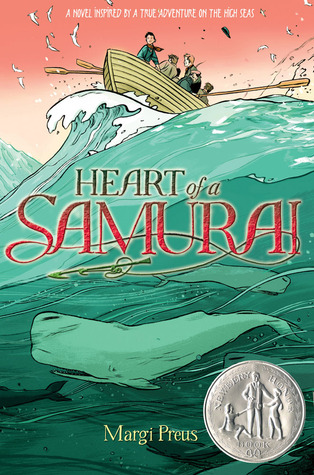Release: April 1, 2008
Hardcover: 169 Pages
Publisher: Henry Holt & Co
Reviewer: Shannon
Book Summary:
It is 1896. Cuba has fought three wars for independence and still is not free. People have been rounded up in reconcentration camps with too little food and too much illness. Rosa is a nurse, but she dares not go to the camps. So she turns hidden caves into hospitals for those who know how to find her.
Black, white, Cuban, Spanish—Rosa does her best for everyone. Yet who can heal a country so torn apart by war? Acclaimed poet Margarita Engle has created another breathtaking portrait of Cuba.
(Courtesy of the Publisher)Black, white, Cuban, Spanish—Rosa does her best for everyone. Yet who can heal a country so torn apart by war? Acclaimed poet Margarita Engle has created another breathtaking portrait of Cuba.
Shannon's Thoughts:
*****
Release: August 1, 2010
Hardcover: 305 Pages
Publisher: Henry N. Abrams
Reviewer: Shannon
Book Summary:
In 1841, a Japanese fishing vessel sinks. Its crew is forced to swim to a small, unknown island, where they are rescued by a passing American ship. Japan’s borders remain closed to all Western nations, so the crew sets off to America, learning English on the way.
Manjiro, a fourteen-year-old boy, is curious and eager to learn everything he can about this new culture. Eventually the captain adopts Manjiro and takes him to his home in New England. The boy lives for some time in New England, and then heads to San Francisco to pan for gold. After many years, he makes it back to Japan, only to be imprisoned as an outsider. With his hard-won knowledge of the West, Manjiro is in a unique position to persuade the shogun to ease open the boundaries around Japan; he may even achieve his unlikely dream of becoming a samurai.
Shannon's Thoughts:








Both of these books sound great from a historical point of view, but I am with you on the heavy hitting suffering and death as far as Middle Grade readers go. I might actually read The Surrender Tree because it is a fairly short story, and I also had no clue about that period of time in Cuba. Thanks for the reviews. :)
ReplyDeleteBoth sound like they might be tough on young readers but I'm going to suggest them to my nieces and nephew - they love books like this.
ReplyDeleteKaren @For What It's Worth